
Jennifer Levasseur provided an engaging talk on what she termed "one of the most important and compelling images in human spaceflight history." Jennifer discussed the history of the photograph, the astronauts involved in the Apollo 17 mission, the political and cultural context into which the photograph emerged and the Blue Marble's enduring legacy. She made some strikingly new and challenging arguments about the photograph's "author" and the origins of the "Blue Marble" title. She also raised important points regarding the technologies used and the significance of human-taken space photography. Many of the points Jennifer made were reflected on and discussed further in subsequent talks (see e.g. James Ryan's response and the artist talks). You can view some of Jennifer's slides along with the audio recording by clicking on the images below. And follow links in the "Further Resources" section for more of Jennifer's writings, including her influential book Through Astronaut Eyes: Photographing Early Human Spaceflight.
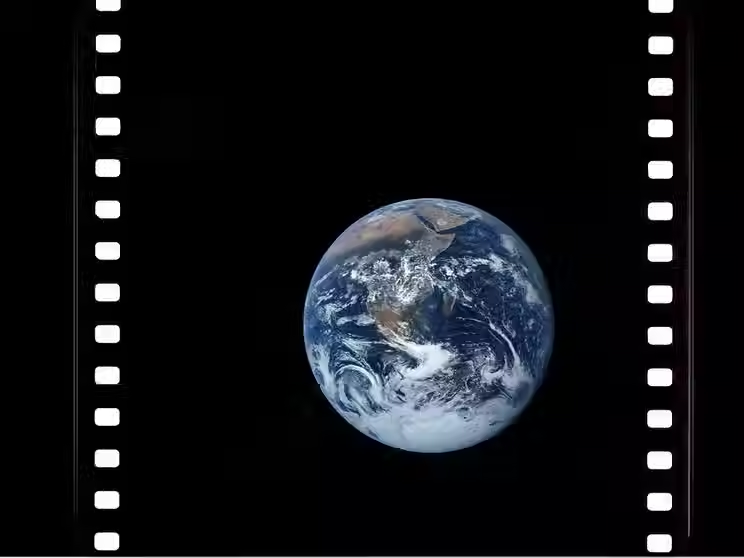
2mins 30 secs: The Blue Marble "in its original form." Jennifer noted that this version of the Blue Marble is taken from the 70mm roll of film brought back by the Apollo 17 Astronauts. Credit: NASA.

6mins 30secs: The crew of Apollo 17 - "the last human surrogates to see Earth from that distance." From left to right: Ron Evans, Harrison Schmitt, Gene Cernan. Credit: Smithsonian.

10mins 50 secs: Hasselblad cameras from Apollo 11 (contained in the Smithsonian collections). Similar to cameras used to capture the Blue Marble. However, the Apollo 17 would have used a powerful 250mm lens when taking this photograph. Credit: Smithsonian.

15mins 50 secs: The edited Blue Marble. The version most commonly reproduced in books, environmental flags, even the "very first screensaver on an iPhone." Jennifer argued that the photograph "provided a human perspective on what it would feel like to see this Earth, alone, floating in space." Photograph credit: NASA.
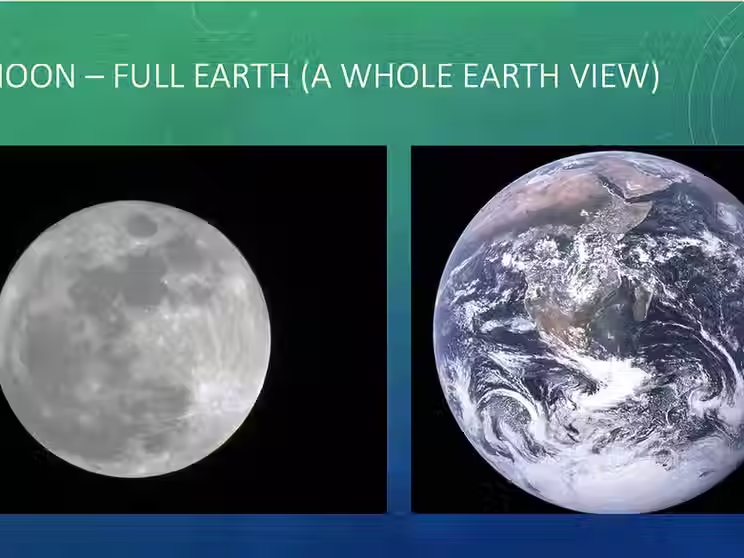
18 mins 30 secs: Jennifer discussed the various names given this photograph, noting that NASA's initial description described it as a "full earth" photograph, an image unobstructed by shadows, "the only instance when this was possible on an Apollo mission." Photograph credits: NASA.

19mins 10 secs: Jennifer notes that the first reference to the Earth as a "Blue Marble" actually occurred in a news report on the Apollo 10 mission (see 22mins 30 secs). However, the "Blue Marble" moniker gains popularity later in the 1970s and 1980s. This was in line with the growing import placed on NASA as an educational institution and seeking to connect with young people (the name itself alluding to a children's toy).
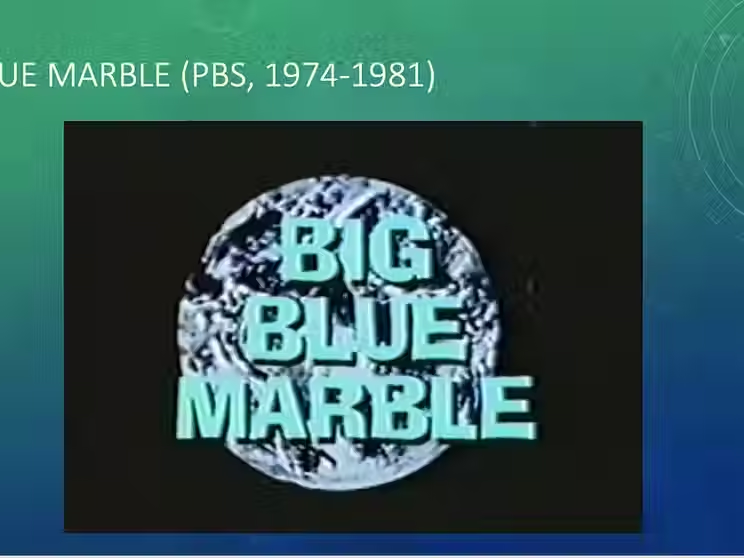
20mins 40 secs: Big Blue Marble was a children's educational television programme intended to encourage children to "think globally, to think about something bigger than themselves." Representatives from NASA acted as advisors for the show (inc. astronaut Frank Borman from Apollo 8).
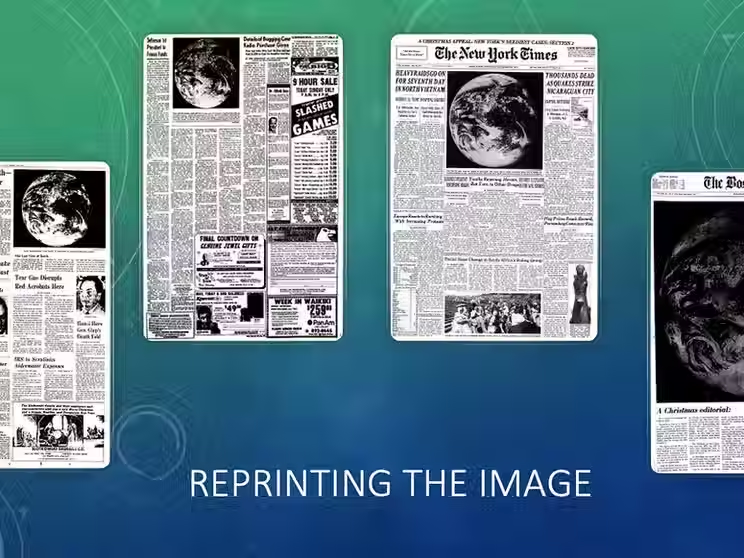
25mins 30 secs: US press coverage of the Blue Marble, Christmas Eve and Christmas Day 1972. Only the Boston Globe (Christmas Day) devoted a full page to the image. Note the ways in which the image, in other publications, was situated amongst stories covering global events and issues.
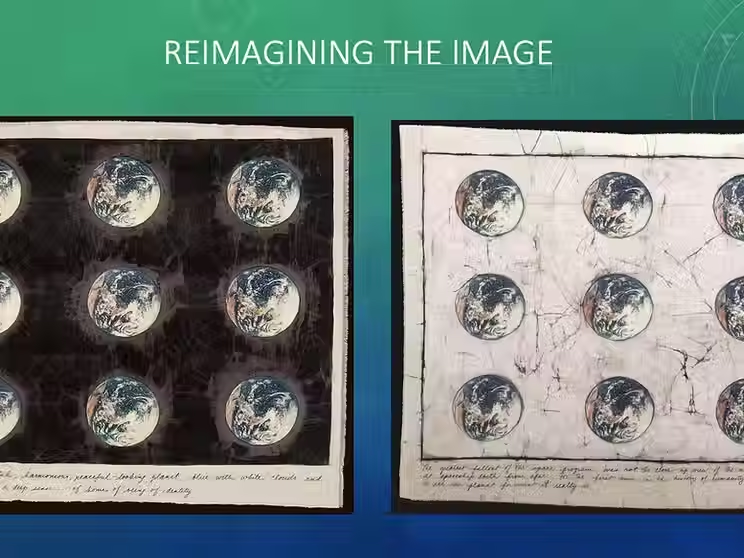
27mins 30 secs: Home and Spaceship Earth (both 1985) by Angela Manno (Smithsonian Collections). Vivid examples of how the Blue Marble has served as inspiration for new artworks and imagery. Credit Angela Manno.

30mins 50 secs: Image captured by the DSCOVR satellite (July 2015). Satellite and digital compositing technology has enabled a number of new Blue Marbles to be created. Credit: NASA.
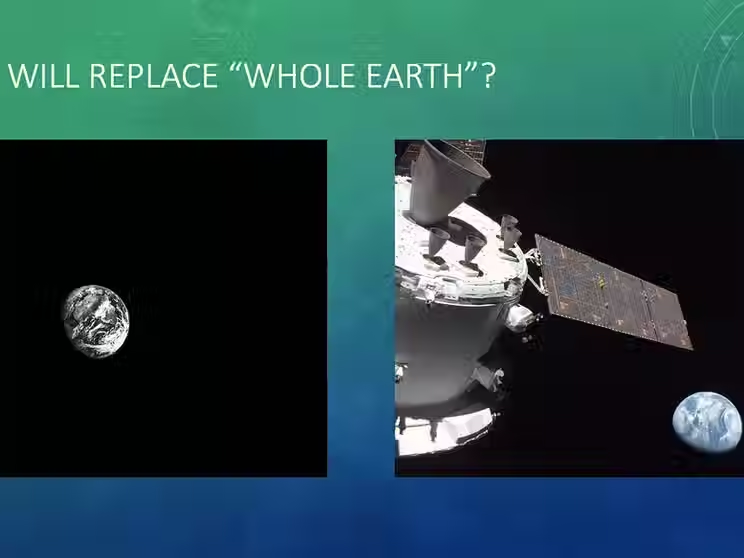
32mins 30 secs: Recent images from Artemis 1 (2022). There are 20 cameras onboard Artemis but "only one that is pointed in the same way that an astronaut that would look out the window." The next Blue Marble "will not be taken by a white man." Artemis 2 promises to include a more diverse crew. Credit: NASA.

Jennifer concluded her talk with a more specific photograph of Earth from space, namely of Portsmouth, UK, the conference venue. This is a view "that was enabled by that experience on Apollo 17. It was because we looked back at Earth and started thinking about Earth again that we put people in orbit around it and more satellites around it in order to understand it better. So when we talk about the environmental movement being inspired by the Whole Earth image, this is the result of that."

Jennifer Levasseur
Dr. Jennifer Levasseur received her BA in history from the University of Michigan in 1999, an MA in American Studies from The George Washington University in 2002, and a PhD in history at George Mason...

NASA's "Blue Marble" Photograph Fifty Years On
Dec 7, 2022
A series of talks, workshops, performances and artworks devoted to revisiting the impact and legacy of NASA's "Blue Marble" photograph.